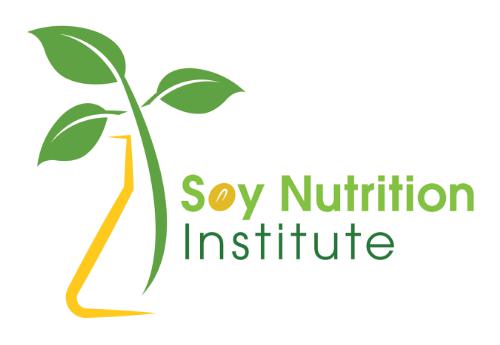Science & Environment
SNI Exec, Scientists Review Health Benefits of Soy At National Symposium In Chicago

CHICAGO, Aug. 28, 2013 /PRNewswire/ — Exploring research and new applications with soy were the major focus of the 16thSoy Symposium, sponsored by the United Soybean Board (USB) and the Soyfoods Association of North America.
Product innovators and food industry leaders came together at the course, which was a prelude to the Institute of Food Technologists Annual Meeting and Food Expo in Chicago earlier this summer. Twelve presenters offered in-depth knowledge and resources to educate attendees on the nutritional and health benefits of soy protein, soy oil and soyfoods as well as the functionality of soy ingredients.
Mark Messina, PhD, executive director of the Soy Nutrition Institute, discussed a variety of topics relevant to several different population groups. Two findings applicable to postmenopausal women were especially notable. A meta-analysis published in the journal Menopause convincingly showed soybean isoflavones alleviate menopausal hot flashes. The analysis, which included 17 placebo-controlled clinical trials involving 1,200 women, found isoflavone exposure statistically significantly reduced hot flash frequency and severity by more than half. This benefit of soy is particularly important to women 50 to 55 years old, the age group for whom menopausal symptoms are most pronounced. This is also the group most likely to reap the coronary benefits of soy, according to research presented by Messina. A three-year clinical trial reported that in comparison to women consuming milk protein, carotid intima media thickness was reduced by 68 percent in women consuming 25g per day of isoflavone-rich soy protein, which translates to about three to four servings of soyfoods.
Regardless of the benefits, women won’t consume soyfoods if they believe doing so increases their risk of breast cancer. However, in addition to specifically discussing the relevant clinical and epidemiologic data refuting these concerns, Messina noted both the American Cancer Society and the American Institute for Cancer Research have concluded breast cancer patients can safely consume soyfoods.
Although much of the soy research conducted in recent years has focused on menopausal women, Messina emphasized that soy has something to offer men, as well. To this point, he described the details of a meta-analysis of epidemiologic studies that found that among Asian men, higher soy consumption was associated with a nearly 50 percent reduction in the risk of prostate cancer. He reassured men they need not worry about any unwanted hormonal effects of soy by citing the clinical trial data that overwhelmingly show soy does not lower circulating testosterone concentrations or raise estrogen levels.
David Jenkins, MD, PhD, DSc, University of Toronto, addressed the coronary benefits of soyfoods. His decade-long work with the portfolio diet – a comprehensive dietary approach that dramatically lowers circulating cholesterol concentrations – has achieved worldwide recognition. Jenkins reviewed the role of soy protein and soyfoods in this diet. He noted that soy protein has a direct cholesterol-lowering effect, an attribute that was first formally recognized by the US Food and Drug Administration in 1999, and that soyfoods can also lower blood cholesterol indirectly when replacing common sources of protein in Western diets because the fatty acid content of the diet will be improved as a result. Jenkins noted that as a result of these attributes, soy is now recognized by the Canada Cardiovascular Society as a component of a heart-healthy diet.
One of the more controversial issues involving soy, the possible hormonal effects of soy infant formula, was addressed byThomas Badger, PhD, director of the Arkansas Children’s Nutrition Center. As part of a longitudinal study of 600 children from birth through puberty being conducted at the center, Badger reported no estrogenic effects have been found in children who were fed soy formula as infants. Further, soy formula-fed infants experienced growth and development at least as well as milk formula-fed infants.
Badger noted his study has shown “clear and significant differences” among the three diet groups being followed: breast-fed, soy formula-fed and milk formula-fed infants. He noted that breast-fed children scored higher than both types of formula-fed children in terms of body weight, length, bone mineral density and other metrics.
In regard to developments among soybean growers, Steve Poole, director of nutrition and public relations for USB, reported on a major initiative by the organization aimed at providing the food industry with healthy replacements for trans fat. To this end, he discussed the movement toward the development of high-oleic soybean oil. The industry is currently ramping up high-oleic soy oil supplies with commercial availability next year and 9 billion pounds available by 2023.The Soy Nutrition Institute is a private non-profit organization dedicated to the review, analysis and support of research on soy and health. It is funded by USB, with additional support provided by dues from industry stakeholders, including Solae, Archer Daniels Midland, Co., Pharmavite, WhiteWave Foods, the Soyfoods Council and the Soyfoods Association of North America.
For more information, or to join the Soy Nutrition Institute, call 360/379-9544 or visit www.thesoynutritioninstitute.com.
For more information, contact:
Mark Messina, Executive Director
360/379-9544
Steve Veile, Facilitator
573/635-3265
SOURCE The Soy Nutrition Institute
RELATED LINKS
http://www.thesoynutritioninstitute.com

















































